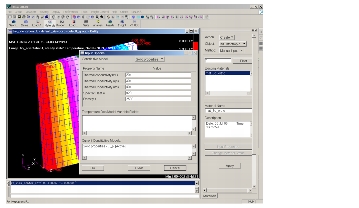XXXXXXXXXXXXXXXXXXXXXXXXXXXXXXXXXXXXXXXXXXXXXXXXXXXXXXXXXXXXXXXXXXXXXXXXXXXXXXXXXXXXXXXXXXXXXXXXXXXXXXXXXXXXXXXXXXXXXXXXXXXXXXXXXXXXXXXXXXXXXXXXXXXXXXXX''"> 3D Material Orientation
3D material orientation is much different from (and simpler than) 2D material orientation, because it always works by CID selection. The axis 1 direction is for

, the axis 2 for

, the axis 3 direction is for

. The most common method is to input a CID which will define (X,Y,Z) or (R,

,Z) or (R,

,

) material directions. Sometimes the element coordinate system is used. This is usually done for complex shapes, often composite materials where

can be assumed.
MSC Sinda for Patran provides two methods to define the material orientation for 3D elements:
CID Option | the most common way as described previously. |
String Option | the user can select the “Elemental” or “Global” option, or manually input “Elemental”, “Element”, “elemental” or “element”. |
When the “Elemental” option is selected, the element coordinate is used to define the three material directions. The element coordinate system is only used for special cases. If the user inputs “Global” or other strings, the CID0 will be used to define the material orientation axes.
If there is no input for 3D Material Orientation, then CID0 will be used as the default coordinate system. In fact, “Global” = empty = CID0 = default.
